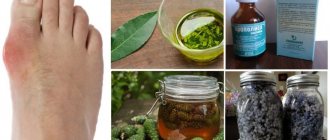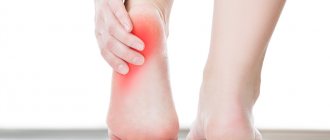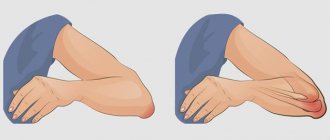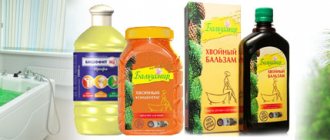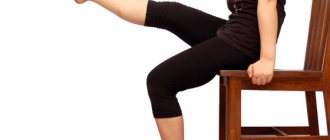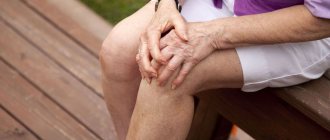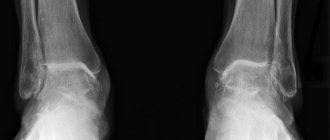Elbow bursitis: photos, symptoms and treatment
Bursitis is the process of inflammation that develops in the joint capsule. To understand the process, it should be said that around each joint there are several synovial bursae that are filled with liquid contents. They are intended for shock absorption (separation of one articular surface from another) and protection of joints from traumatic damage.
The most common injury is the knee, and the second most common injury is the elbow joint. It contains three bags, each of which contains a certain amount of clear fluid (interosseous, ulnar subcutaneous and interosseous ulnar). The inflammatory process in one of these bags is called bursitis.
Causes
Bursitis of the elbow joint can occur for a number of reasons, among which are the following:
- In the first place, as a factor leading to the development of bursitis, is arthritis of any nature - psoriatic, rheumatoid or gouty. That is, against the background of acute inflammation, fluid begins to accumulate in the cartilage itself or in the synovial bursa, which leads to the formation of bursitis.
- It can also occur as a result of infection. This happens especially often when the skin tissue directly next to the bursa has been damaged, and a certain microorganism or bacterium has gotten inside. Panaritium can also serve as an infectious cause of bursitis, when the bones and soft tissues of the fingers are exposed to acute inflammation. Also, the infection can enter the synovial bursa not from the outside, but “from the inside,” that is, transmitted through the blood (hematogenous route) and lymph (lymphogenous route).
- Bursitis can result from microtrauma, but this is somewhat less common. The elbow is injured due to constantly repeating monotonous movements, so this disease is unofficially called the “occupational” disease of all those people whose activities involve resting the elbow on a hard surface. These could be students, engravers, chess players, draftsmen, etc. In such people, the subcutaneous ulnar bursa most often becomes inflamed, and, for example, in tennis players, the interosseous ulnar bursa is inflamed. This difference is associated with the characteristics of the distribution of the load on the elbow, and therefore the location of microtraumas.
- Sometimes bursitis occurs some time after receiving a mechanical injury to the elbow. In the case when a person hits or falls on this part of the body. It is extremely rare, however, that idiopathic inflammation of the synovial bursa occurs, that is, one whose etiological causes remain unclear.
Some other chronic diseases, such as diabetes, are also considered risk factors leading to inflammation in the elbow joint. The cause of suppuration can also be a general weakening of the immune system, metabolic disorders, as well as the use of steroid drugs.
Classification
Bursitis, like any inflammatory disease, can be acute, subacute or chronic. In addition, the specific type of bursitis depends on which of the bursae is damaged. The quality of the fluid contained in the bursa in this disease is also taken into account.
In this regard, bursitis is distinguished:
- serous;
- hemorrhagic;
- purulent;
- fibrous;
- mixed.
If the disease is based on the introduction of coccal flora, then the process is considered nonspecific. And in cases of disorders associated with tuberculosis, gonorrhea or syphilis, we are talking about specific bursitis.
Symptoms and photos of elbow bursitis
Symptoms of acute serous-hemorrhagic or serous process:
- mild pain, swelling, redness, increased temperature in the area of inflammation.
- movements in the elbow are limited.
- There may be a spherical protrusion visible to the eye, soft to the touch.
- the general condition, as a rule, does not suffer; only some patients experience low body temperature, accompanied by malaise and weakness.
- acute inflammation ends with recovery or becomes chronic.
Symptoms of a purulent type of disease:
- pain with purulent is sharp, bursting or tugging.
- The more acute the inflammation, the more intense the pain syndrome.
- the elbow is hot to the touch, swollen, the skin is congested with blood (hyperemic), sharp pain is noted on palpation.
- movements are severely limited, regional lymph nodes are enlarged.
- Symptoms of general intoxication appear: the temperature rises to 38–39 degrees, you feel weak, tired, sweating, headache, irritability.
Chronic bursitis lasts much longer than acute, manifesting itself with the following symptoms:
- moderate pain when moving,
- discomfort in the elbow area,
- movements in the joint are preserved almost completely,
- the area of inflammation looks like a dense formation.
The photo below shows how elbow bursitis manifests itself in an adult.
Symptoms of elbow bursitis
The first manifestations of the onset of the disease are discomfort and pain when changing the position of the hand. Bending and straightening the elbow after holding the arm in one position for a long time becomes difficult.
Article on the topic: why does the elbow hurt when flexing and extending.
Swelling and changes in the shape of the skin around the elbow joint. Symptoms increase in the absence of specific treatment. An increase in local temperature and redness of the skin indicates the addition of an infectious process. In complicated conditions, body temperature rises, and intoxication phenomena are observed during the purulent process of bursitis.
Diagnostics
The diagnosis is usually easy to make based on an examination by an orthopedic traumatologist. But to clarify the prevalence of the process and exclude complications, there are a number of instrumental diagnostic methods:
- X-ray of the joint: allows you to determine the presence of an inflammatory process in the joint.
- Ultrasound of the joint: helps to clarify the size and location of the inflamed bursa, the amount of exudate in it
- MRI of the joint: allows you to diagnose bursitis of the deep joint capsules.
This disease must be diagnosed as early as possible in order to begin adequate treatment in a timely manner.
Consequences
Complications of elbow bursitis are much more difficult to treat than the disease itself. They arise due to failure to provide timely medical care and the disease progressing to severe forms. A peculiar melting of the walls in the synovial cavity occurs and the pathogenic mass spreads to adjacent areas.
As a result, the following are formed:
| Lymphangitis | Inflammation of the lymphoid ducts, which become more pronounced in the form of a mesh or red lines extending from the site of purulent formation. |
| Lymphadenitis | It is formed as a result of infection of the lymph nodes, to which lymph flows from the source of inflammation and an abscess is formed. |
| Phlegmon | It is formed as a result of infection of the lymph nodes, to which lymph flows from the source of inflammation and an abscess is formed. |
| Suppurative arthritis | The disease typically spreads to the joint that is located next to the victim and limits its movements. |
Treatment of elbow bursitis
In the case of acute or chronic bursitis, anti-inflammatory drugs (such as voltaren, ibuprofen, diclofenac), as well as antibacterial drugs, are used at home. The latter are selected taking into account the sensitivity of pathogenic microorganisms.
In mild cases of the disease, various gels and ointments with an anti-inflammatory effect have a good effect, but they only help in conjunction with oral administration of the medications described above. To treat a clearly defined inflammatory process that is difficult to treat, glucocorticoid preparations are used. They are introduced into the cavity of the inflamed joint capsule.
Please note that only a qualified doctor has the right to prescribe all medications; you should not try to do this yourself or even with the help of a pharmacist, as this can be dangerous to your health!
In what cases is it possible to treat elbow bursitis with folk remedies at home?
Treatment with folk remedies is possible only if there is no pus or blood in the joint, or severe swelling of the soft tissues. For mild forms of bursitis, it is permissible to wrap leaves of vegetable and medicinal plants, as well as use lotions and baths. However, this treatment method should be combined with traditional medications, since home remedies are low in effectiveness.
Some folk remedies contain strong allergens, so you need to be careful when choosing ingredients. It is recommended to first consult with your doctor before starting therapy. Read about the main symptoms and modern methods of treating elbow bursitis in this article.
You can increase your chances of a speedy recovery if you start treatment for bursitis earlier. In this case, traditional methods will be especially effective.
Physiological therapy
After the acute period of bursitis has passed, physiotherapy is added to the complex of treatment procedures. Painful symptoms subside during the first procedures. Physiological procedures are well tolerated by patients, such as:
- UHF;
- Massage;
- Laser therapy;
- Paraffin heating;
- Mud treatment;
- Magnetotherapy;
- Bishofite wraps;
- Physiotherapy.
It is recommended to treat elbow bursitis at home by following a certain diet. It is recommended to limit the use of table salt in food and reduce the consumption of meat broths, however, boiled meat is beneficial. It is advisable to consume fruits and vegetables according to the dietary menu.
What foods are good for bursa inflammation?
The main goal of creating a diet for people with elbow bursitis is a balanced menu containing all the necessary vitamins. It is recommended to consume the required amount of vitamins and beneficial elements from food, and not from dietary supplements.
Your daily diet should include seasonal vegetables and fruits. Bananas are a year-round source of magnesium and potassium. Also, meat and dairy dishes are no less important on the menu.
There are a number of rules by following which you can get the maximum benefit from food:
- You should not immediately after consuming cottage cheese eat oranges and other citrus fruits, since vitamin C complicates the absorption of calcium in the body;
- calcium is best combined with water-soluble vitamin D;
- It is recommended to drink a couple of glasses of grapefruit juice daily . You can divide your juice consumption by drinking ½ glass before meals.
You should include foods containing collagen in your diet, as this element is beneficial for the skin and joints.
Useful products for elbow bursitis of any shape and degree include:
- Dairy products : fermented baked milk, sour cream, cottage cheese, yogurt. Kefir is not recommended as it is a high glycemic index product.
- Plant foods : carrots, parsnips, beets, celery root, cabbage, sweet peppers, pumpkin and all seasonal ones, berries, citrus fruits.
- Plant proteins : lentils, peas, pumpkin seeds, chickpeas.
- Fats : avocados, oils and nuts.
- Animal proteins : fish, lean meat, seafood, poultry.
The diet should be designed in such a way that during the day you absorb all the necessary elements and substances for the health of the whole body.
Folk remedies
Some patients, in addition to ointments and gels with anti-inflammatory effects (drugs Voltaren, Indomethacin, Traumeel S, Dimexide, Diclofenac) use folk recipes for bursitis of the elbow joint. Complex treatment at home lasts several weeks and requires regular use of homemade formulations.
- Directions for use: 20 grams of propolis per 1 glass of quality vodka. The resulting liquid must be mixed and allowed to stand for 1 week. Afterwards, the mixture is applied to clean gauze or bandage and applied to the inflamed area for 5-10 minutes. To achieve the effect, you need to apply the compress every day for several weeks.
- Cabbage leaf compress. This method is effective not only for bursitis, but also for arthritis. Wash the leaf, remove the stringy part, cut or beat until the juice appears, apply to the sore spot, bandage it, insulate it with a soft cloth. Cabbage perfectly “draws out” inflammation and reduces pain. As soon as the sheet dries and becomes hot (after about half an hour), replace the compress with a fresh one. Keep the cabbage on your elbow longer: the remedy is harmless.
- Burdock decoction helps relieve joint inflammation, especially with acute bursitis. Directions for use: 2 tbsp required. spoons of crushed burdock root per 1 liter. Boil water for about 5 minutes. Then let the broth brew for 10-15 minutes and apply a compress to the epicenter of inflammation. For complete warming up, it is recommended to insulate the compress with a woolen scarf on top and allow the joint to warm up for 1.5 hours. Course of treatment: once a day for a month.
- Ointment made from honey and aloe. An excellent remedy for relieving swelling, healing microcracks and wounds on the elbow. Take 3 des. l. tender pulp, add 1 tbsp. l. liquid honey, 2 drops of tea tree ether. Mix the ingredients thoroughly, put half the mixture on gauze or a bandage, and secure it to the inflamed area. There is no need to wrap up the problem area. Aloe ointment with honey is suitable for the treatment of purulent bursitis of the elbow joint while heating is prohibited. Keep the mixture for 50 minutes, change the compress, wait the same amount. Course – 20 procedures (or less, depending on the result).
Timely diagnosis and proper treatment of bursitis will preserve joint health. An integrated approach to the treatment of the inflammatory process using medications, folk remedies, and physiotherapy will relieve the patient of painful symptoms. Don’t put off treating bursitis “for too long”: the disease often progresses to a chronic stage, and attacks cause significant discomfort.
General therapeutic measures
When the first symptoms of bursitis appear, consultation with a specialist is necessary. The latent course of the disease leads to a chronic type of disease, which significantly complicates the diagnosis and treatment of the elbow joint. The final diagnosis is established after a complete examination of the patient.
The diagnostic examination includes the following activities:
- Examination by a traumatologist;
- X-ray examinations;
- Ultrasound;
- Laboratory types of research;
- Puncture;
- In severe cases, surgery.
For a successful treatment process, you should first of all limit movement and stress on the elbow joint. It is recommended to use special fixing bandages or an elastic bandage.
The use of medications is prescribed according to the degree of neglect of bursitis. Anti-inflammatory drugs for the osteoarticular system are used for all degrees of the disease.
Antibacterial therapy is used for complicated suppurative processes with the parallel use of drugs or dietary supplements to preserve intestinal flora.
Chronic bursitis should be treated with medications to improve blood and lymph circulation. Symptoms of edema are reduced with the use of diuretics.
In the complex treatment of elbow bursitis, physiological therapeutic measures are prescribed:
- Massage.
- UHF.
- Mud baths.
- Electrophoresis.
- Physiotherapy.
Drug therapy, physiotherapeutic procedures and treatment with folk remedies have a beneficial effect on the condition of the elbow joint. During the acute period of the disease and in the remission stage, a special menu is recommended.
It is necessary to limit the consumption of salt and foods that accumulate water in the body. You should increase your consumption of vegetables and fruits containing increased amounts of vitamins and microelements. Popular recommendations are herbal teas and dried fruit compote.
Folk remedies for treatment at home
Before using any home treatment, consult a doctor. It is important to exclude allergic reactions to the products used.
Compresses with fresh potatoes relieve inflammation well. Symptoms go away after several treatments. Grate the potatoes on a coarse grater or cut into thin slices, place on a cotton cloth and apply to the sore joint. Cover the top with cling film and a warm scarf. Can be left overnight.
A compress made from fresh potatoes has proven itself very well as an anti-inflammatory agent in folk medicine.
At home, wrapping cabbage leaves effectively relieves swelling and dulls pain. Fresh leaves are slightly crumpled and applied to the sore joint. On top there is compress paper and thick fabric or a woolen scarf. The compress is applied for several hours or overnight.
You can treat a sore elbow with a compress with dimexide yourself at home. It is necessary to dilute one part of dimexide and five parts of boiled water or saline solution. Apply to the elbow for two hours, in severe cases for three, it is not recommended to hold longer to avoid skin burns.
Lotions with propolis are an effective remedy for bursitis. Take 100 ml of vodka and 10 grams of propolis, leave at room temperature for a week. Moisten a linen or cotton cloth with the prepared solution and apply it to the inflamed elbow. Also, you should not keep the compress on the joint for more than three hours.
Be careful not to take propolis infusion orally.
Warm compresses made from flax seeds give good results at home. Heat 100 grams of seeds, place them in a fabric or gauze bag and apply to the inflamed area until the seeds cool. This method can be treated for two weeks.
Kalanchoe leaves can be applied as a pain reliever. The sheet is cut lengthwise and placed in the freezer. When the sheet freezes, it is wrapped in gauze and applied to the painful area.
Another folk recipe. Burdock root, dried or fresh (it is better to take burdock that is at least 2 years old). Pour half a liter of boiling water over 10 grams of root and leave for 30 minutes. Then take linen cloth or gauze in six layers, moisten it and apply it to the elbow. Cover the top with cling film and a warm scarf. The procedure should be carried out for at least two weeks.
Brewed burdock root relieves inflammation and pain well.
Traditional healers have noted that it is useful to drink grapefruit juice three times a day, 100 ml after meals. Metabolism is actively activated and diseased cells are removed from the body.
This folk method has long been known. Fresh pine or spruce needles are taken, filled with water and boiled for half an hour. Leave for 10-12 hours. Elbow baths are done daily for a month.
Treatment with traditional methods, together with medications and physical therapy, gives excellent results if you consult a doctor in a timely manner.
Dear readers, that’s all for today, what folk remedies do you use to treat elbow bursitis? Feel free to leave comments.
Surgery
When complications of the disease develop and pus appears in the joint capsule, an operation becomes urgent, which is quite simple and consists of pumping out the fluid and injecting antibacterial and anti-inflammatory drugs into the joint.
Bursitis is usually treated with medications, but if complications occur, it requires surgery.
Surgeries are also performed to remove the damaged bursa. They are completely uncomplicated and highly effective. Patients soon return to their normal lives.
Prevention of bursitis
Preventive measures will help avoid the risk of developing pathology:
- strict adherence to work and rest schedules;
- dosing of physical activity;
- immediate competent treatment of infectious diseases;
- timely initiation of treatment in order to prevent the transition of the inflammatory process to the purulent phase;
- prevention of traumatic effects on the area where synovial capsules are located;
- use of protective equipment if there is a potential risk of injury;
- abrasions, scratches, cuts, abrasions must be treated with hydrogen peroxide and an antiseptic.
Elbow bursitis is a dangerous disease. The disease should not be left to chance, as complications can be disastrous. The disease cannot be allowed to reach severe forms.
Restrictions during treatment
The diet for bursitis is quite varied and balanced, but there are a number of foods that should be avoided.
It is worth completely or partially eliminating fast food, salty and sweet foods, carbonated drinks, butter and margarine from your diet. Bad habits, including alcohol and smoking, should be completely eliminated. It is necessary to avoid any physical stress on the joint as much as possible. Therapeutic exercise can only be carried out during the rehabilitation period after successful treatment.
There are also contraindications for each type of bursitis, for example, for recurrent and purulent bursitis of the elbow joint, it is prohibited to do any warming procedures.
